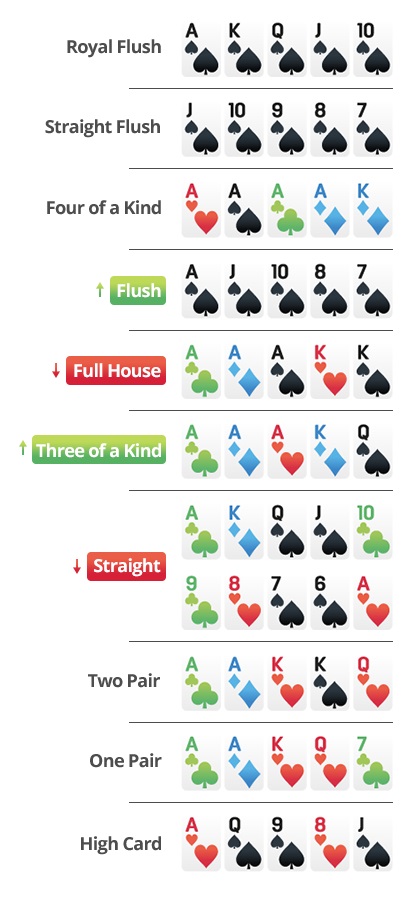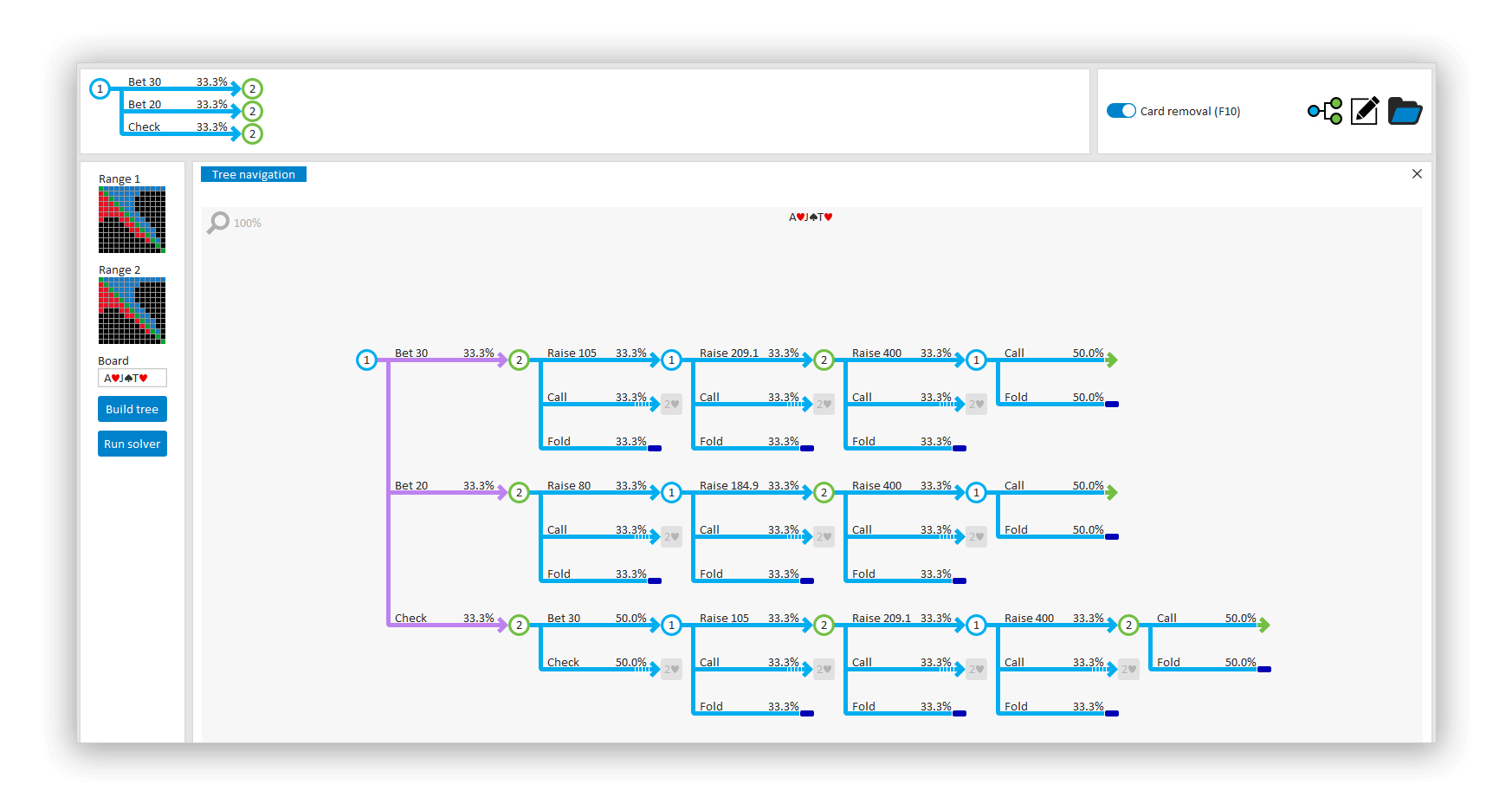Short Deck Poker Best Starting Hands
Six Plus Hold’em/Short Deck Poker Beginners Strategy Now is the time to get up to speed and get ahead of the curve on what will likely be the next “hot” poker game. Six Plus Hold’em (6+), also called Short Deck Poker, is a community card poker game based on Texas Hold’em. One of the keys to being a strong Texas Hold 'em poker player is to know which hands are playable and which are not.This list of the top 10 best starting hands for Texas Hold 'em is a good place to start learning. Do keep in mind, however, that there is some disagreement over which hands are the best, and it does depend in part on your skill level and style of play. Starting ranks and pot odds will be covered soon, but first up, learning the slightly different hand rankings is a must -if you don’t know what wins and loses you’re in big trouble! Because the game is only played with 36 cards instead of the traditional 52 (all the 2’s, 3’s, 4’s and 5’s are removed) there are a few differences to. Well, first off, we will be dealt AK about 2.5% of our hands – which is quite a lot of the time, maybe once every five or six rounds at a full ring table, so it’s important enough to learn its worth in Six Plus Hold’em. If we accept that suited versions become a lot more valuable - flushes beat full houses in our new version - then it can also make sense to play AKs slower than usual.
NL Hold’em Starting Hand Charts
One aspect of the game of No-Limit Hold’em that causes beginning players much grief is deciding which hands to play and which hands to dump. NL Hold’em is much more difficult than Limit Hold’em because the value of a hand depends on so many factors other than just the cards in your hand. Despite this difficulty, our coaches believe that following some general guidelines and adjusting from these is a better solution than having no guidelines at all. Given that well over half of your profitability in NL Hold’em is based on hand selection alone, we have developed these charts to help you better determine whether to play or fold.


There are no perfect No-Limit starting hand charts. That is because there are many factors that affect your decision, and charts cannot account for all of them. Some of these include:
- The size of your opponent's stacks.
- How loose or tight, passive or aggressive, your opponents are.
- Where these opponents are located at the table – for example, does an aggressive player still have to act after you?
- Your image at the table – for example, how tight or tricky you are perceived.
That being said, these charts will serve you well in most typical low-stakes No-Limit cash games, such as games with blinds of $1/$2, and home games. These games typically have several loose players at the table, and good opportunities for winning big pots with suited connectors and pocket pairs. With practice, you will be able to be a consistently winning player with these charts as a starting point. As you improve, you'll find yourself making adjustments to these charts based on the factors listed above, and more.
AGAIN: These charts are a good starting point for beginners. Specifically, Chart #1 recommends a significant amount of limping. This is great in loose, passive games but less often seen in tougher games. You’ll find other training material on Advanced Poker Training that may recommend a more aggressive approach for more experienced players.
Note: It would be a serious mistake to apply these hand charts before reading the Frequent Asked Questions first.
Short Deck Poker Best Starting Hands In Omaha
CHART #1 ‐ LOOSE, PASSIVE GAME (OFTEN 4-5 LIMPERS PER HAND)
NO ONE HAS RAISED YET
- Raise Always
- Call from Early Position, otherwise raise
- Call always
- Call from Middle or Late Position if the conditions are right (see Frequently Asked Questions)
CHART #2 ‐ TIGHTER GAME (FEWER LIMPERS) OR MORE AGGRESSIVE GAME
NO ONE HAS RAISED YET
- Raise Always
- Call from Early Position, otherwise raise
- Call (or Raise) from Middle or Late Position if the conditions are right (see Frequently Asked Questions)
CHART #3 ‐ THERE HAS BEEN A SINGLE RAISE
(3‐5 TIMES THE BIG BLIND) BEFORE YOU
- Re‐Raise Always
- Call from Early Position, otherwise re‐raise
- Call always
- Call from Middle or Late Position if the conditions are right (see Frequently Asked Questions)
FREQUENTLY ASKED QUESTIONS
For the hands in yellow, what do you mean when you say to play these hands if the conditions are right? The hands in yellow are speculative hands. They should always be folded from Early Position. From other positions, they can be profitable given the right conditions. Some of the questions to ask yourself:
- Are there other players who have called so far (the more, the better)?
- Are the players who have called playing poorly after the flop? Will they pay me off if I hit something?
- Is there an aggressive player still to act behind me (you might get raised and have to fold)?
- If there has been a raise and no other callers, what chance do I have of using my position after the flop to win the hand even if I don't improve (Chart #3 only)?
Why does Chart #2 say to sometimes raise with the hands in yellow, but Chart #1 does not? We have different goals in mind. Using Chart #1, we want to call to encourage additional players to enter the pot. These hands will be immensely profitable when our loose, passive opponents enter the hand, and get trapped when we flop a set, or make a well-disguised straight. When using Chart #2, however, we want to size up the opponents still to act. If they are tight, we can raise. Sometimes, we'll pick up the blinds. Other times, our pre-flop aggression will allow us to take down the pot on the flop.

What's the difference between AKs and AKo? AKs means an Ace and King of the same suit. AKo means an Ace and King of different suits.

Short Deck Poker Best Starting Hands Ever
What are early, middle, and late position? Early Position is generally the first 2 (in a nine player game) or 3 (in a ten player game) positions after the blinds. Late Position is the “cutoff” position (to the right of the dealer), and dealer button positions. Middle Position is everything in between.
How much should I raise? As a general rule, raise 3 to 4 times the big blind, plus 1 extra big blind for every player who has called before you. So if there are 2 callers already, raise between 5 and 6 times the big blind.
What if someone raises after I call? Whether you call the raise depends on how much money the raiser has for you to win, how many other players are involved, and what type of hand you have. As a general rule, if you have a pocket pair, lean towards calling. If there are a lot of other players (and therefore a big pot), lean towards calling. In general, fold suited connectors from early position. Fold hands like KQ that don't play well against a raiser.
How do I play from the blinds? From the small blind, play the same hands you would play from late position, plus a few more. But don't call with junk hands like T5o, just because it is “cheap”. From the big blind, if there is a raise to you, play like you would if you had already called from early position.
The chart says to fold KQo to a raise. Really? Yes, this hand performs very poorly against typical raising hands. Against AK, AQ, AA, KK, QQ, you are a big underdog. Other typical raising hands like JJ, TT, 99, AJs, are slightly ahead of you as well. The only time you might call or re-raise is from late position, if the opener was in middle or late position, indicating they might have a wider range of hands.
I was told to fold AJo from Early Position, why do you say to call with it? Folding AJo is not a bad idea in many games. We included it because, at low stakes tables (even tight or aggressive ones), the players are often playing badly enough after the flop that it can be profitable. We used data from millions of hands of low-limit poker to analyze this. The same could be said for KQo, ATs, and KJs – you can make a small profit in the long run at most low-stakes games, but folding would be perfectly acceptable from early position.
Can I use these charts in a NL Hold'em tournament? The charts would be best applicable to the early stages of a NL tournament, when everyone has a deep stack. In the middle and later stages, they should not be used.
Read all our instructional articles
Recently I’ve been hearing about a new game called short deck. It’s played just like normal Texas hold’em, except it’s played with a short deck—all the cards deuce through five are removed from the deck. Aces play as the low end of a nine-high straight. Some variants reorder the hand rankings, most notably changing it so that flushes beat a full house.
When I first heard about it, it sounded to me like the new math would break a lot of players’ intuition they’ve built playing regular no-limit hold’em. So the first thing I wanted to do was go through how some of the math changes.
Let’s say you get dealt 10h 9h. Let’s go through the math of how often you flop straight and/or flush draws both for normal hold’em and then for short deck.
Full Deck Draws
Once you have your two cards, 50 cards remain in the deck. Three of these will appear on the flop, so there are 50 choose 3 total possible flops. (You can type 50 choose 3 into Google and it will give you the answer.) In this case, that’s 19,600 possible flops.
To flop a flush draw, you need two of the 11 remaining hearts on the flop, as well as an unrelated third card. So that’s 11 choose 2 times 39 (the number of non-hearts remaining in the deck). Since 11 choose 2 is 55, the total number of flush draw flops is 2,145. Divide that by the total number of flops, and you get about 11 percent, which is how often you will flop a flush draw.
To flop an open-ended straight draw you need either Q-J, J-8, or 8-7 on the flop—in each case also with an unrelated card. There are 16 ways to have Q-J (four queens times four jacks), and 16 ways each for the other two for 48 total ways.
If we specify that the unrelated card can’t be one that completes the straight, there are 40 possible unrelated cards for each of the 48 total ways to flop a straight draw. That makes 1,920 total straight draw flops. Divide that by the total number of flops, and you get about 10 percent, which is how often you will flop a straight draw.
Short Deck Draws
In short deck, there are 34 remaining cards after you get your two, so 34 choose 3 or 5,984 possible flops.
There are only 7 remaining hearts, so to flop a flush draw you have 7 choose 2 times 27 possible flops. That’s 567 flops or about 9.5 percent of flops. The full deck chance was 11 percent so flush draws are somewhat less common in short deck.
To flop a straight draw you still have your 48 ways to get Q-J, J-8, or 8-7 on the flop, but now there are only 24 unrelated third cards. That’s 1,152 total straight draw flops or about 19 percent. The chance of flopping a straight draw in short deck is much higher than it is with a full deck.
Making The Draw
Everyone knows the chance to make flush and straight draws in normal hold’em are nine and eight outs respectively. You can use the rule of two and four to estimate the chance of making the draws. But the exact way to figure it out is to do something similar to what we did on the flop. The only twist is you calculate the chance of missing the draw and then subtract that from one.
There are 47 choose 2 possible turn and river cards. That’s 1,081. If you have a flush draw (nine outs) then there are 38 cards that brick your draw, so you have 38 choose 2 ways to miss. That’s 703 total misses out of 1,081, or 65 percent. That leaves a 35 percent chance you hit your flush draw.
Straights work the same, except you have 39 cards that brick your draw. That’s 741 total misses, or 68.5 percent. That leaves a 31.5 percent chance of hitting the draw.
In short deck, there are 31 choose 2 possible turn and river cards. That’s 465. A flush draw has only five outs in this game. So there are 26 cards that brick your draw, and you have 26 choose 2 ways to miss, or 325. That’s about a 70 percent chance to miss, so it’s about a 30 percent chance to make a flush.
Open-ended straights still have 8 outs though. So there are only 23 cards that brick your draw, giving you 23 choose 2 ways to miss, or 253. That’s about a 54.5 percent miss percentage, so you hit your straight about 45.5 percent of the time.
That’s pretty close to 50-50! And you flop a straight draw to your connector nearly 20 percent of the time. Flushes are a bit harder to make in this game, but straights are much easier.
Flopping A Set

The odds of flopping a set change also in short deck. You can figure it out the same way as the chance of making draws—count the flops where you miss the set and subtract from one. With a full deck, there are 48 choose 3 ways to miss your set, or 17,296. That’s about 88 percent of flops, leaving about a 12 percent chance to flop a set.
In short deck, there are 32 choose 3 ways to miss your set, or 4,960 flops. Divide that by the 5,984 total possible short deck flops, and there’s about an 83 percent chance to miss, leaving a 17 percent chance to flop a set.
Final Thoughts
I don’t know how many of us will be playing short deck soon. The game is popular in only a small number of places, mostly in ultra high-stakes cash games. I think one reason it’s become popular in those games is because it turns your ingrained intuitions against you.
When you’ve played hold’em long enough, you begin to internalize the probabilities to make certain hands. You end up getting to the correct answer in many situations through intuition honed over zillions of hands.
Short deck wrecks a lot of those intuitions. The probabilities to make the basic hands are just plain different. Therefore hand values are different. The hands to semi-bluff with and bluff catch with and so on are also different. Blockers mean more in some contexts.
The basic concepts of poker are all the same. But the details of how to resolve conflicts between competing concerns is turned on its head.
Shaking things up in this way always tends to reward the best poker players. The ones who can adjust more quickly than anyone else. The ones who can figure things out rather than rely solely on learned intuition.
Doing the math in this article is the beginning of this process. ♠
Ed’s newest book, The Course: Serious Hold ‘Em Strategy For Smart Players is available now at his website edmillerpoker.com. You can also find original articles and instructional videos by Ed at the training site redchippoker.com.